Toshiba Encore – Hands on and first impressions
A quick look at Toshiba's Windows 8.1 8-inch tablet
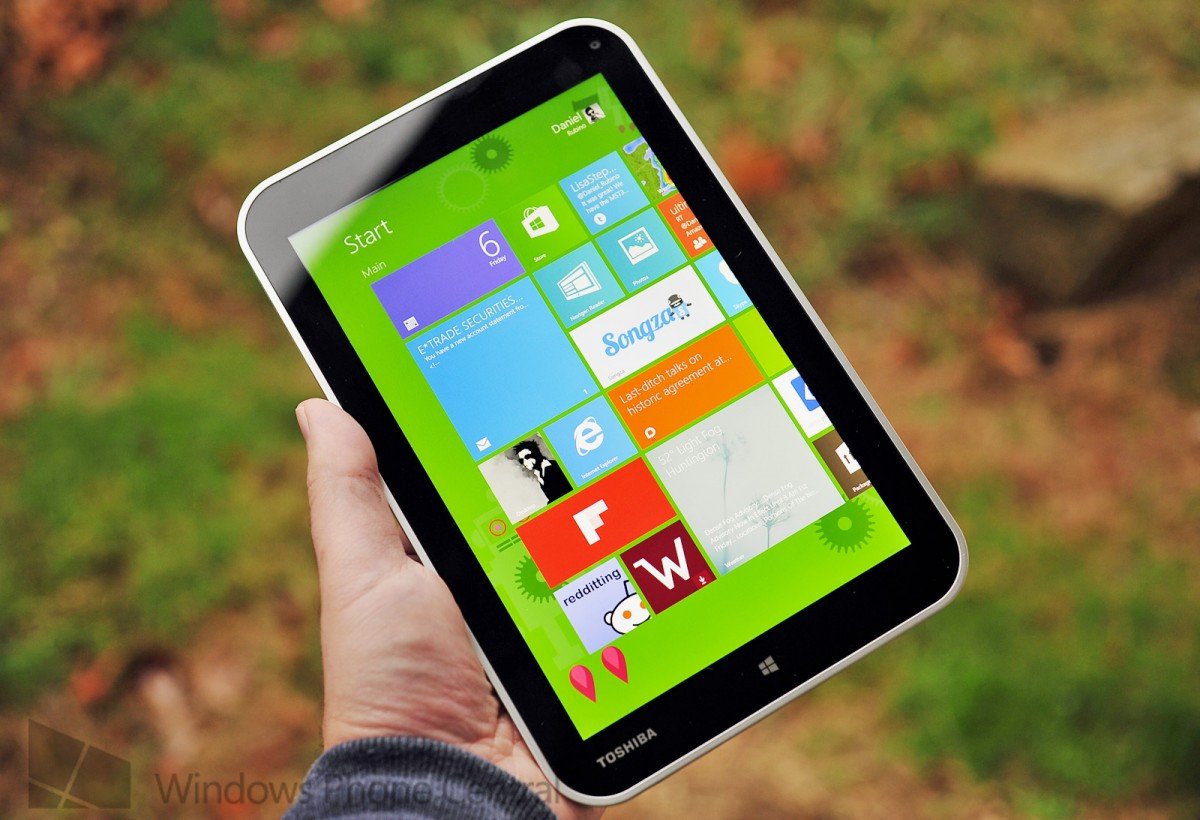
When it comes to 8-inch tablets with Windows 8.1, consumers have quite a few choices this holiday season. The good news here is that so far, almost all of them have been really good in terms of performance due to the similarity in specs. Still, from Dell Venue 8 Pro to Lenvo’s Mixx2 to the Toshiba Encore, each brings a little something to the table.
Which one is the best? I’ll answer that later, but for now, I’m taking a look at the Toshiba Encore.
Toshiba Encore specifications
- Intel Atom Z3740 Quad-Core at 1.3 GHz (up to 1.8 GHz burst)
- 8 inch IPS 1280 x 800 display
- Windows 8.1 (x86, not RT)
- 32 GB of storage, micro SD expandable
- 2 GB of RAM (DDR3)
- Micro HDMI
- 8 MP rear camera, 2 MP front facing
- 1.1 pounds (16.9 ounces)
- 8.40 x 0.43 x 5.40 inches
- 802.11bgn
- GPS via GNSS (Updated)
When it comes to raw specs, the Toshiba falls in line with the Dell and Lenovo offerings. The IPS display is solid, though not spectacular, performance is really good for this class of device and even the camera (when it works) is noteworthy.

The big selling point for many with the Toshiba is the physical micro HDMI port. While many people don’t need (or care) about such a feature, for some it’s a must have and is unique to this device. I’m not a huge user of HDMI, but when I tried plugging it into my Samsung TV, everything went to hell. In short, the display rotated on the Encore to a vertical orientation and my TV said it did not support that resolution. Locking the display into landscape on the Encore did not ameliorate this issue and at least for now, HDMI on my TV is a no go. Why? I have no idea, but plugging in my Surface 2 or laptops to my TV has never been an issue.
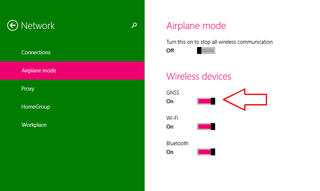
Update: I forgot to mention that like the Miix2, the Encore has built in GPS (GNSS), which for some is a useful feature (see above).
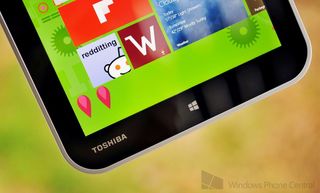
Let’s also get this out of the way: the Encore is a thick, heavy device. Relatively, at least. It’s not prohibitively large and due to its rounded corners and edges, it’s really nice to hold. But it is much thicker than the Dell and at 1.1 pounds, it’s not light (the iPad Air, a full tablet, is just 1 pound). I emphasize “relative” because on its own, I don’t think many will mind the size, but as soon as you put it up against the Dell, Lenvo or iPad Mini, it looks huge.
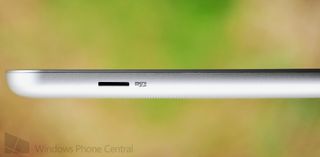
In terms of design, the Encore is really nice looking and probably my favorite so far. The chrome edge around the black bezel is really elegant. The device does creek very slightly but you have to really force it. Where the display meets the body of the device, there are slight hairline gaps. The back is textured and cool to the touch. With the rounded edges and corners, the Encore is easy to hold. Finally, Toshiba kept the stickers to a minimum and the back is very clean.
Get the Windows Central Newsletter
All the latest news, reviews, and guides for Windows and Xbox diehards.

Rear camera sample - Not bad
The cameras are actually decent, in fact I’d say on first blush they’re the best I’ve used for this range. The 2MP front facing camera picks up ambient light very well. Granted, the image was super noisy but if it’s between an image that you can’t see anything (e.g. Dell) or, one where you can (but noisy) in a low-light situation, I’ll take the latter. However, my 8 MP rear camera crashes on occasion—launching completely black and even causing the system to restart once. Clearly, there are some driver issues that need to be worked out.

The IPS display is really good. Whites were white and the viewing angle was IPS-worthy. The auto-adjust for brightness was more aggressive—in a good way—compared to other tablets. Brightness is adequate but the Dell has more juice here.
Buttons are much better than on Lenovo but not as good as the Dell. They clicked, which is great, but the profile is a little low. Still, I can’t complain too much. The Encore also has a front-capacitive button for the Windows key. It works, though sometimes I felt I had to press more firmly to get it to register. That may be a good thing though, as many of you are worried about accidental firings of that button.

The Encore also features dual microphones and dual speakers. The speakers are ‘ok’. They’re loud enough but they lack bass. I haven’t tried the microphones just yet and will follow up on that in the shootout next week.

The Encore comes preloaded with only a few Toshiba apps, though it does have Norton Anti-Virus on board (shudder). Luckily, you can uninstall it. It also comes with a free Office 2013 key, like all other Windows 8.1 devices.
Initial Conclusion

Despite the HDMI not working out for me and the rear camera occasionally not launching, both driver issues that presumably could be fixed, the Encore is an interesting device. In theory, I shouldn’t like it—it’s much thicker than the Dell and even heavier. But the rounded edges and chrome accents make it a looker. Performance is on par with the other tablets, though I’ll need to do some benchmarks for the nitty gritty.
For $329 is it a deal over the Dell? I can’t see a single reason why it would be. My gut is telling me that the Dell Venue 8 Pro will beat the Toshiba in almost every area: price, size, performance and even display. The Dell also support a (mediocre) pen and has an optional folio cover. Having said that, I can’t say I dislike the Toshiba either. It’s a good device, but there’s nothing amazing about it either.
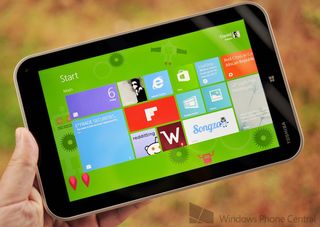
Stay tuned for our 8-inch tablet showdown next week. Have questions? Ask away in comments. Finally, check out our other 8-inch tablet reviews:

Daniel Rubino is the Editor-in-chief of Windows Central. He is also the head reviewer, podcast co-host, and analyst. He has been covering Microsoft since 2007 when this site was called WMExperts (and later Windows Phone Central). His interests include Windows, laptops, next-gen computing, and wearable tech. He has reviewed laptops for over 10 years and is particularly fond of 2-in-1 convertibles, Arm64 processors, new form factors, and thin-and-light PCs. Before all this tech stuff, he worked on a Ph.D. in linguistics, performed polysomnographs in NYC, and was a motion-picture operator for 17 years.